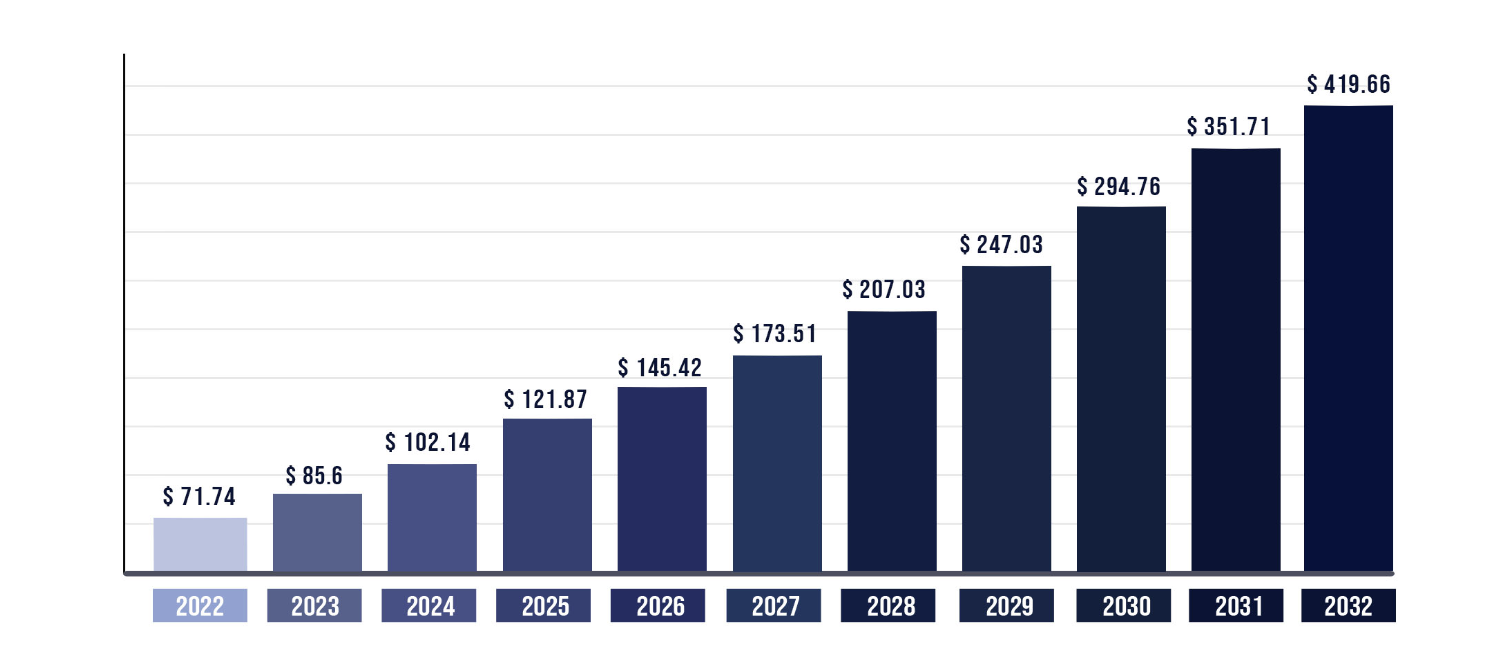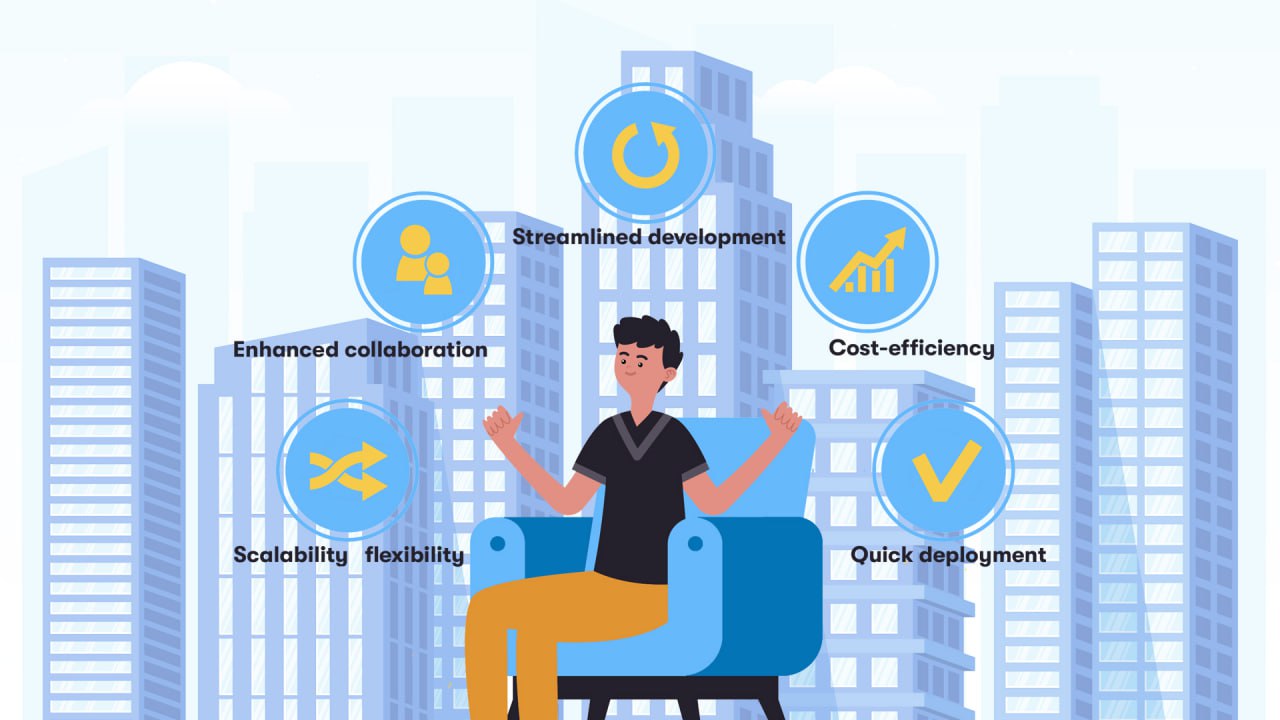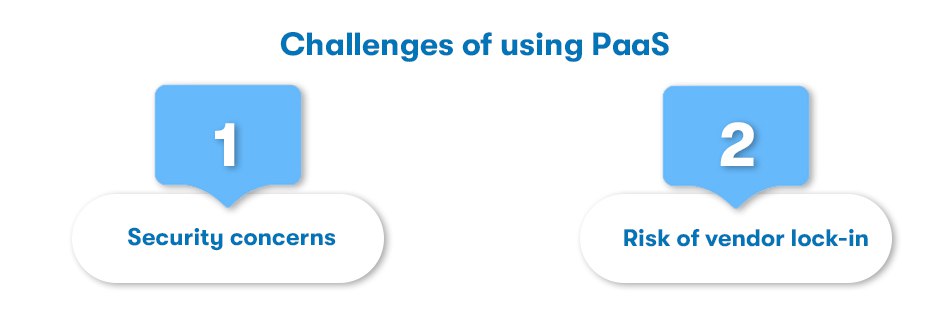Today, Platform as a Service (PaaS) has risen as a silent revolution, reshaping how businesses approach software development, deployment, and innovation. In the tech world, the significance of PaaS has become increasingly evident, ushering in a new paradigm for organizations seeking efficiency, scalability, and agility in their technological endeavors.
According to industry predictions, the global PaaS market is poised to surge, reaching a staggering $419.66 billion by 2032. Such a meteoric rise shows that companies are becoming more aware of how powerful PaaS can be.

This blog post aims to share this approach with the world by examining the meaning and benefits of PaaS and successful use cases.
What is a Platform as a Service (PaaS)?
Platform as a Service (PaaS) is a paradigm in cloud computing that offers clients a platform upon which they can develop, run, and manage applications—all while bypassing the complexities associated with middleware, infrastructure, and operating systems. Positioned between Infrastructure as a Service (IaaS) and Software as a Service (SaaS), it provides an all-encompassing software development environment.
At its core, the PaaS meaning resonates with resource optimization, allowing businesses to focus on application development while leaving infrastructure management to the service provider.
To fully understand the PaaS definition, it’s also worth mentioning the key elements of PaaS:
- Programming tools: PaaS offers a variety of programming tools, libraries, and frameworks that help to speed up the software development process.
- System integration: PaaS enables easy integration with current systems and databases, increasing overall efficiency.
- Source code control: PaaS systems frequently include version control tools, allowing collaborative software development while ensuring code integrity.
Examples of PaaS:
- Google App Engine (GAE): A comprehensive and fully managed serverless application platform designed for the development and deployment of apps.
- Microsoft Azure App Service: A fully managed platform for building, deploying, and scaling web apps.
Benefits of PaaS

PaaS brings a multitude of benefits to organizations, shaping the landscape of software development and IT infrastructure. Let’s explore them closer:
Streamlined development process
PaaS speeds up the software development process by offering a collection of pre-built tools and services. Developers can leverage these resources to write code, collaborate efficiently, and expedite the deployment of applications.
Organizations that use PaaS can considerably reduce infrastructure management costs. PaaS eliminates the need to invest in and maintain separate hardware because the underlying infrastructure is controlled by the service provider. This results in cost savings in terms of hardware, maintenance, and human resources.
Enhanced collaboration
Platform as a service provides a unified environment for development teams to work together by centralizing the coding, testing, and deployment processes. This improves software development efficiency, version control, and communication.
Scalability and flexibility
PaaS solutions are inherently scalable, allowing organizations to scale up or down easily based on application demands. This scalability ensures that resources are efficiently utilized, avoiding over-provisioning or under-provisioning.
Quick deployment
PaaS enables rapid application deployment, reducing time-to-market for new software. Developers can leverage pre-configured components and templates, streamlining the deployment process and allowing for quicker iterations.
How to Use PaaS Effectively: Best Practices for Implementation
Platform as a Service provides organizations with a powerful toolset for streamlining software development and deployment. To maximize the benefits of PaaS, consider the following best practices.
- Clearly define your objectives. Start by clearly defining your organization’s goals and objectives. Understand the specific needs of your projects, the preferred programming languages, and scalability requirements to tailor your PaaS implementation accordingly.
- Choose the right PaaS provider. Select a reputable PaaS provider that aligns with your business requirements. Evaluate factors such as service offerings, performance, security features, and pricing models. A well-suited provider is key to a successful PaaS adoption.
- Embrace system integration. Ensure seamless integration with existing systems, including databases, APIs, and other components. PaaS offers automated tools for integration, promoting a cohesive and efficient software ecosystem.
- Leverage DevOps practices. Adopt DevOps practices to enhance collaboration between development and operations teams. This approach improves communication, accelerates development cycles, and ensures the delivery of high-quality software.
- Implement continuous monitoring. Regularly monitor your PaaS environment to identify and address performance issues promptly. This practice ensures the stability and efficiency of your applications.
- Optimize resource utilization. Periodically review and optimize your PaaS resources. Scaling resources based on demand, adjusting configurations, and implementing efficient coding practices contribute to cost savings and improved performance.
- Prioritize security measures. Place a strong emphasis on security. While PaaS providers implement robust security measures, organizations should actively implement additional protocols to protect sensitive data.
- Foster developer training. Invest in training and skill development for your development teams. Familiarity with the tools and services offered by the chosen PaaS provider empowers developers to maximize the platform’s potential.
- Establish clear governance policies. Define governance policies to maintain control over your PaaS environment. Clear resource allocation, access control, and compliance guidelines ensure a structured and secure implementation.
- Regularly review and update. PaaS evolves, and so should your implementation. Regularly review your setup, stay informed about updates from your PaaS provider, and implement changes to optimize performance and leverage new features.
Importance of choosing the right software development company
Your software development partner’s competence will significantly impact how well your PaaS implementation goes. Pick a provider that is well-versed in PaaS technology and can relate to your company’s goals. To get the most out of this technology, consider a software development company that can help you integrate PaaS into your workflow, offer continuous support, and more. Your PaaS adoption will be more successful if you work with the correct partner.
Potential PaaS Challenges
Although there are many advantages of PaaS, some factors can make its implementation challenging. To successfully manage these obstacles, companies must thoroughly understand them. Implementing PaaS can be difficult for the following reasons:

Security concerns
Despite the robust security measures implemented by PaaS providers, security remains a top concern for organizations—in 2023, cybersecurity was named a top investment priority for organizations. PaaS involves sharing infrastructure and resources, which raises questions about data isolation and privacy. Businesses must implement additional security protocols, such as encryption and access controls, to safeguard sensitive information.
Risk of vendor lock-in
One of the challenges associated with PaaS adoption is the potential for vendor lock-in. Choosing a specific PaaS provider may lead to dependencies that make it challenging to switch to another platform. Organizations must carefully evaluate the long-term implications of vendor lock-in and select PaaS providers that offer flexibility and support interoperability.
As businesses continue to leverage PaaS for innovation and efficiency, addressing challenges and learning from success stories will be crucial in realizing the full spectrum of benefits that PaaS brings to the table.
PaaS in the Real World: Success Stories
As more and more real-world success stories with PaaS emerge, the potential for its revolutionary impact becomes increasingly apparent. Here are a few companies from various industries that have seen a positive impact from implementing PaaS successfully.
Salesforce
Salesforce, a pioneer in the CRM space, has seamlessly integrated Platform as a Service into its operations. Salesforce’s PaaS offering enables businesses to build, deploy, and scale custom applications on the Salesforce platform. This approach has revolutionized CRM, allowing organizations to tailor their customer management processes to specific needs. With Salesforce’s PaaS capabilities, companies can create personalized applications, leverage its workflow automation platform, and gain valuable insights into customer interactions.
Netflix
Netflix, the world’s leading streaming service, relies on PaaS to deliver seamless experiences to its vast user base. PaaS allows Netflix to scale its infrastructure dynamically, accommodating fluctuating demand for streaming content. By leveraging PaaS, Netflix can focus on content delivery and user experience without the burden of managing the underlying infrastructure.
Adobe Creative Cloud
Adobe Creative Cloud, a comprehensive collection of creative software programs, also demonstrates the revolutionary impact of PaaS in the creative industry. By embracing PaaS capabilities, Adobe has altered how users access and collaborate on tools such as Photoshop, Illustrator, and Premiere Pro. This platform not only assures easy device interaction but also provides a dynamic environment for continual upgrades and feature enhancements. The success of Adobe Creative Cloud highlights how PaaS can allow creative workers to focus on their craft without having to worry about infrastructure management.
Spotify
Spotify, one of the world’s largest music streaming companies, relies on PaaS to provide a seamless user experience to millions of music listeners. Spotify uses PaaS to efficiently handle its massive library of songs, user preferences, and playlists. Spotify’s capacity to flexibly expand resources allows it to withstand peak demand times, assuring uninterrupted music streaming for its diversified user base. This success story emphasizes the importance of PaaS in enabling high-performance, data-intensive applications, making it a valuable tool for firms in the media and entertainment sector.
Final Thoughts
To sum up, PaaS signifies a profound change in how businesses handle software development and deployment. The true PaaS meaning lies in its capability to empower businesses with scalable solutions, ensuring applications can seamlessly grow to meet evolving user demands. Platform as a service is becoming more critical in driving innovation in software development as the cloud computing landscape changes.
With more and more enterprises seeing the value in PaaS, it will soon be commonplace, helping businesses keep up with the fast-paced digital world. Adding PaaS to your technological stack might be the game-changer for your company, whether you’re just starting up or have been around for a while.





